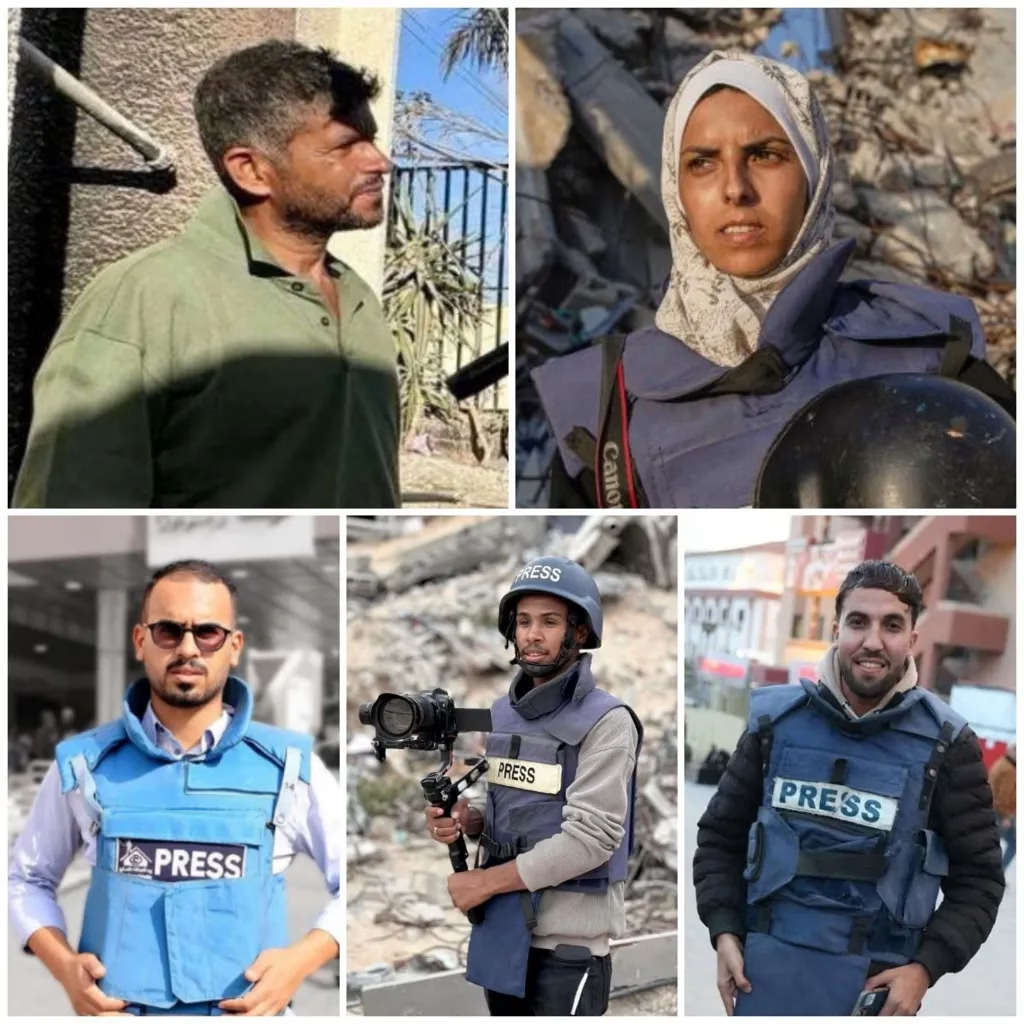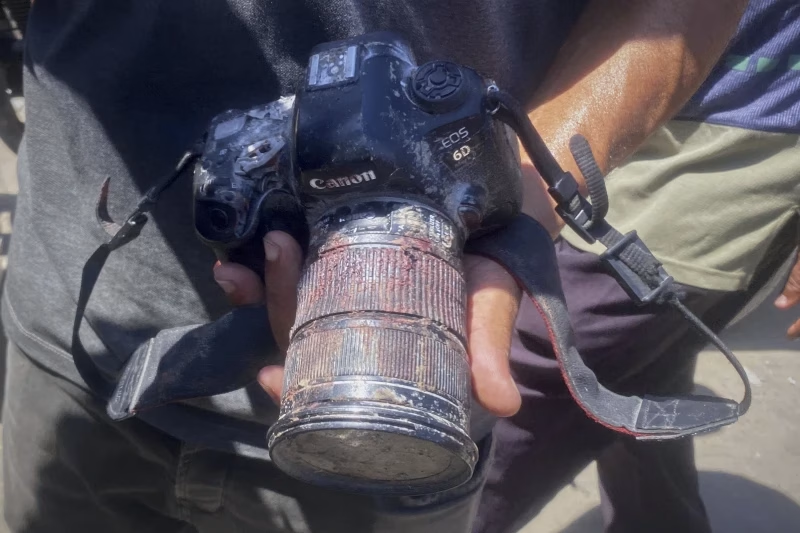Israel’s double-tap strikes on Nasser Hospital in Gaza killed 20 people, five of whom were journalists, according to the news outlets they worked for, the World Health Organization and Gaza’s health ministry.
Israel has used the controversial “double taps” military tactic that are designed to maximise the number of casualties by firing on first responders to the scene of the first attack.
In the initial strike, at least one person was reported to have been killed, and the second attack minutes later claimed the lives of the rescuers and journalists who arrived at the scene at Nasser hospital in Khan Younis, reports BBC.
A medical staff said the first strike hit at around 10:00am local time (GMT +3), causing mass panic and chaos. The second strike hit the same spot approximately 10 minutes later. A British medical professional, who was in the intensive care unit treating patients at the time, said the medical staff had been planning their escape from the building when the second blast occurred.
Nasser hospital’s emergency department, inpatient ward, and surgical unit was hit, according to the World Health Organization, and its head Dr Tedros Adhanom Ghebreyesus informed the emergency staircase was damaged.
A livestream by Al Ghad TV, an Arab news channel, captured the moment the hospital was struck.

Among the dead journalists, Husam al-Masri worked as a cameraman for Reuters. His death in a first strike while operating a live TV feed was reported by the news agency. International news organisations have used the footage he had taken.
Mariam Dagga, a 33-year-old freelance journalist working with AP, was a regular at the hospital. Abby Sewell, an AP regional editor, confirmed her death and noted Dagga’s young son had been evacuated earlier during the war.
Mohammad Salama, who contributed to Al Jazeera and Middle East Eye, had been engaged to journalist Hala Asfour. The couple had hoped to marry after a ceasefire.
Ahmed Abu Aziz, a freelancer with Middle East Eye, was also killed. Moaz Abu Taha, who had recently worked with Haaretz documenting malnourished children at Nasser, died in the strike as well. Reuters had occasionally published his content.
Due to Israel’s restrictions on international journalists entering Gaza, local reporters like these play a crucial role in documenting the conflict.
The Committee to Protect Journalists (CPJ) says over 190 journalists — mostly Palestinians — have died since the war began, with six killed in an Israeli strike near Shifa Hospital two weeks prior.
The Israeli military acknowledged conducting a strike near Nasser Hospital but released limited details. Statements throughout the day remained vague, as officials tried to contain international backlash.
In a later statement, Netanyahu’s office reiterated Israel “deeply regrets the tragic mishap that occurred today at the Nasser Hospital in Gaza” and reaffirmed support for journalists and medical staff.
However, the nature of the attack — with a second strike hitting first responders — has drawn sharp criticism, as “double-tap” tactics are widely condemned in warfare.
International reaction was swift. UN Secretary General António Guterres condemned the “horrific killings,” calling for a “prompt, and impartial investigation.” UK Foreign Secretary David Lammy called the incident “horrifying,” while France’s President Emmanuel Macron labeled it “intolerable,” urging Israel to “respect international law.”
Germany expressed shock, and US President Donald Trump, when asked, said he was unaware but “not happy about it.”
Press freedom groups also weighed in. “When and where is it going to end? There is international law,” said Thibaut Bruttin of Reporters Without Borders.
The CPJ added, “Israel’s broadcasted killing of journalists in Gaza continues while the world watches and fails to act firmly.”
The Foreign Press Association called it a potential “watershed moment” and demanded Israel “halt its abhorrent practice of targeting journalists.”


